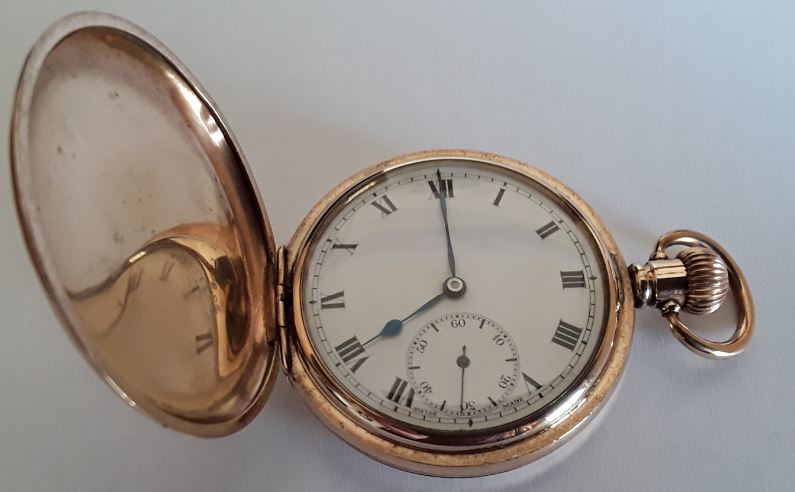Last updated on July 3, 2024
I have a passion for collecting antique watches, they are practical, stylish and have historical charm. They have a tactile quality and a patina that comes from years of use. Every scratch, dent or blemish tells a story and adds to the character of the watch. Sometimes I just like to feel the heft of a watch in my hands and listen to it tick. Antique timepieces have a hearty tick, much louder than their modern counterparts. I literally have to hold a modern mechanical watch to my ear to hear it tick. Right now, as I type, I can hear my latest acquisition ticking loudly on my desk, an arms-length away.
English and Swiss antique watches
I collect English and Swiss-made antique watches, that is timepieces that are at least 100 years old. I need to be confident of the age before I will make a purchase. Initially, I was reliant on the dealer to affirm the age, but as my knowledge grew, I started to date the watches myself. Watches can be dated by the movement or by the hallmarks on the case.
The watches I collect are also presentable, that is they are aesthetically pleasing. Although mint condition watches may be the holy grail for some, I prefer my watches to carry the marks of gentle age and use, suggesting of a life lived outside the confines of a bank vault. These subtle changes in colour and patina that antique watches have give them a charm and character that mint timepieces simply don’t possess.
I also need my antique watches to be reliable, because they are practical timepieces and I like to wear them. They are of no use to me unless they can keep reasonably accurate time. I require my watches to be accurate to within two minutes a day and have a power reserve of at least 16 hours on a full wind. This means I can go to work for the day or attend a function and know that my antique watch is going to give an accurate time at a glance. If I need a precise time, which I rarely do, I always have a smartphone in my pocket.
Expense
Whenever my hobby comes up in conversation, I am always asked, is it expensive? The answer is twofold. Yes, it can be if you want to collect the marquee names like Patek Phillipe, Zenith or Rolex. Additionally, if you want to collect watches with grand complications you need deep pockets. However, good quality antique watches can be surprisingly budget-friendly. After all, these timepieces were made in the thousands, if not millions, and many still survive. It’s a hobby that could easily be sustained on £5 per week, that’s about the cost of a pint in my local pub. Antique watches that meet my criteria, from recognised dealers, can be bought for less than £250 and sometimes much less.
I tend to acquire a watch, thoroughly research it, wear it on a few occasions and then resell it to fund my next purchase. I have no need for a drawer full of antique watches when I can only wear one at a time. Besides, it keeps my collection ticking over, minimises the costs and allows someone else to enjoy an antique watch. I rarely profit on the resale and quite often make a small loss when postage is taken into account.
Research
If you want to start collecting antique watches start reading some brand histories and find a niche that strikes a chord. My niche is for English and Swiss antique watches. Watch collecting is for the long term, so make sure whatever niche you choose to follow has the interest to sustain you. Once you know what you want to buy, it comes down to a matter of budget and finding the best example that you can. As mentioned above there are examples of antique watches available at very reasonable prices.
To start with talk to knowledgeable dealers, or visit auction houses and talk to their specialists. There is a steep learning curve and you will most likely make mistakes early on, as I certainly did. I have so far avoided buying online. I prefer to be able to deal with the seller in person and be able to ask questions about my purchase. This is just an issue of confidence on my part. I am sure as my knowledge grows, I might begin to take a few more chances. It’s a fascinating and rewarding hobby and I have enjoyed every antique watch that has passed through my collection.
Related content
A beginner’s guide to antique pocket watches.
Tax benefits for UK antique watch collectors.
5 things you should know before purchasing an antique watch.
A list of additional posts regarding antique watches can be found on the Guides page.




I have a Camerer Kuss & Co. pocket watch that my great-grandfather owned. I have inherited it. I believe it dates to the First World War, so likely similar to the date on your watch. The movement is signed Camerer Kuss & Co and looks identical to the movement on your watch. Does this mean it is actually a Longines watch? Does this affect the value? I know that Longines is a respected brand. Thanks, Sonia.
Hi Sonia, Camere Kuss & Co was a retailer, not a watchmaker. You can read about my Camerer Kuss & Co watch. The 19.75N movement is a very good movement and the the fact that it is Longines, does add value to the watch. They were, and are very well respected watchmakers. That isn’t to say that it is worth a life-changing amount. I always say the value of an antique watch is more sentimental than monetary. Please enjoy your heirloom and thanks for commentating, Jason.